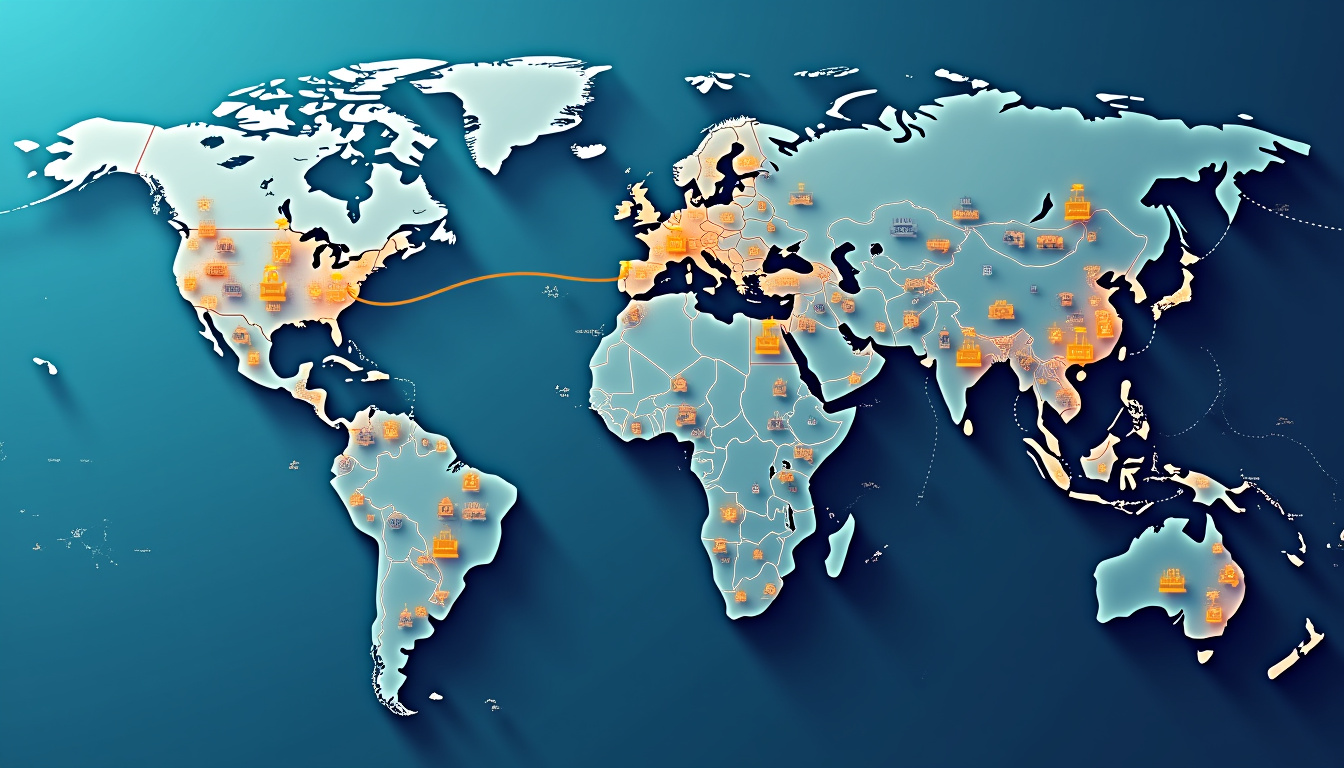Understanding tariff line classification is essential for businesses engaged in international trade, as it directly influences customs duties, regulatory compliance, and strategic pricing decisions. A tariff line, also referred to as a tariff code or commodity code, is a detailed classification system used by customs authorities worldwide to categorize products according to agreed international standards. This classification affects everything from the cost of importing goods to eligibility for trade agreements, making it a critical factor in global commerce.
In this article, we will explore how tariff line classification affects global trade flows and the pricing strategies companies adopt to remain competitive. Whether you are an importer, exporter, or supply chain manager, understanding this concept will enable smarter decision-making and optimize your operational costs.
What Is a Tariff Line and Why It Matters
A tariff line is a numerical code assigned to specific products, often aligned with the Harmonized System (HS) codes created by the World Customs Organization. These codes organize goods into hierarchies of chapters, headings, and subheadings, enabling customs officers to efficiently determine applicable tariffs and regulatory requirements.
Tariff lines matter because:
- They determine customs duties—the taxes levied on imported goods vary by tariff line.
- They impact non-tariff measures, such as import quotas, licensing, or safety standards.
- They guide trade policy enforcement, enabling countries to apply different rules based on product type.
- They influence pricing strategies by affecting landed costs and profit margin calculations.
Incorrect tariff line classification can result in costly fines, shipment delays, or unexpected expenses due to misapplied tariffs or regulatory breaches.
How Tariff Line Classification Influences Global Trade
Streamlining Customs Clearance and Compliance
Efficient classification reduces the risk of customs clearance delays. Accurate tariff line assignment ensures shipments are processed swiftly, avoiding costly hold-ups at borders. On the other hand, misclassification can trigger inspections and investigations that disrupt supply chains.
Optimizing Duty Payments and Exploiting Trade Agreements
Different tariff lines may be subject to widely varying duty rates. By correctly classifying products, companies can minimize customs duties, sometimes benefiting from preferential tariffs under trade agreements such as the USMCA or EU trade deals. For example, products classified under a tariff line eligible for a free trade agreement will incur lower tariffs, reducing the overall import cost.
Enhancing Market Access and Regulatory Compliance
Certain products require compliance with safety and environmental standards that depend on their tariff classification. Proper tariff line categorization ensures that all regulatory controls, such as labeling requirements or product certifications, comply with the import country’s standards, avoiding export restrictions or penalties.
Impact of Tariff Line on Pricing Strategies
Pricing Based on Landed Costs
Landed cost includes the product price plus all associated costs incurred until the goods reach the buyer’s doorstep, including tariffs, taxes, and shipping. Since tariffs depend on tariff lines, precise classification directly affects landed cost calculations and, consequently, pricing strategies.
For instance, a product classified under a tariff line with a high duty rate will have a greater landed cost, potentially reducing profit margins. Businesses must factor such costs into their pricing to remain profitable while competitive.

Competitive Pricing and Market Entry Decisions
By understanding tariff lines and their associated duties, exporters can strategically price products to balance affordability and profitability in target markets. They may also decide which product variants to develop or promote based on tariff impacts.
Adjusting for Currency Fluctuations and Tariff Changes
Tariff rates can change due to trade policy shifts or geopolitical tensions. Companies that actively monitor tariff line classifications can adapt prices promptly, leveraging tariff concessions or mitigating cost increases.
Tools to Simplify Tariff Line Classification
Classifying products can be intricate due to the complexity of international standards like the Harmonized System (HS), UNSPSC, or NAICS. To simplify this process, services like Classifast.com offer instant classification and category search for multiple international classification standards. By inputting a product description, users quickly get accurate tariff lines and codes, which helps avoid misclassification risks.
How to Ensure Accurate Tariff Line Classification: A Step-by-Step Guide
-
Understand Your Product Thoroughly
Know your product’s materials, function, and components in detail. -
Refer to Official Customs and Trade Resources
Consult the Harmonized System database or national customs authorities’ tools. -
Use Classification Tools
Utilize services like Classifast.com that provide instant classification assistance. -
Seek Expert Advice if Needed
Complex products or ambiguous cases may require consultation with customs brokers or trade lawyers. -
Maintain Documentation
Keep records of product specifications and classification decisions for audits.
Frequently Asked Questions
Q1: What is a tariff line in customs classification?
A tariff line is a detailed numerical code used to categorize products for customs purposes, impacting tariff rates and regulations.
Q2: How can tariff line classification affect import costs?
The tariff line determines the applicable customs duty rate, which directly influences the total import cost and pricing.
Q3: Are tariff lines standardized internationally?
Tariff lines are based on international standards, primarily the Harmonized System (HS), but countries may have their own extensions or adaptations.
Conclusion: Why Mastering Tariff Line Classification Is Crucial for Your Business
In the complex world of global trade, mastering tariff line classification is a game-changer. It directly influences customs duties, regulatory compliance, and your ability to adopt effective pricing strategies that keep you competitive and profitable. Leveraging tools like Classifast.com to simplify classification processes can save time, reduce errors, and optimize your global supply chain operations.
Don’t let tariff classification be a costly mystery—equip your business today with the knowledge and resources to navigate global trade smoothly and strategically. Visit Classifast.com now to get started on accurate tariff line classification and take control of your international pricing strategy.
References:
World Customs Organization. (n.d.). Harmonized System (HS). Retrieved from https://www.wcoomd.org/en/topics/nomenclature/overview/what-is-the-harmonized-system.aspx
